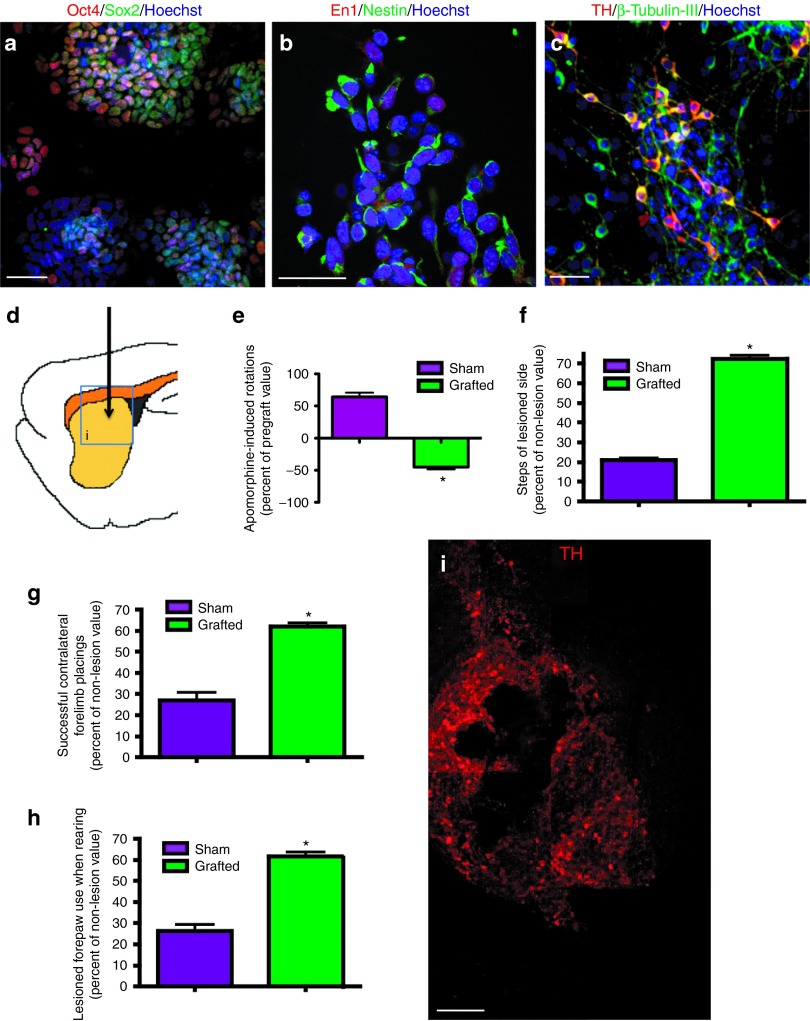Figure 1.
Intrastriatal grafting of mouse embryonic stem (ES) cells differentiated to dopamine (DA) neurons cause behavioral recovery in pharmacological and non-pharmacological tests. (a) Undifferentiated ES cells express the pluripotency markers Oct4 and Sox2. (b) ES cell–derived neural precursors are positive for Nestin and Engrailed1 (En1). (c) During stage 5, neurons labeled with β-tubulin-III are present, and 27 ± 3% of these are tyrosine hydroxylase (TH)-positive, indicating differentiation to DA neurons. Nuclear staining with Hoechst 33258 is shown in a–c. Scale bar = 30 µm. (d) Half a million ES cells–differentiated in vitro to DA neurons were grafted in the lesioned dorsal striatum of 6-OHDA–injected hemiparkinsonian adult rats as shown in the scheme. (e–h) Behavioral recovery was monitored for 45 days. Pharmacological and non-pharmacological behavioral tests showed, as previously reported, that grafted animals improved significantly. (e) Apomorphine-induced rotations decreased in grafted animals 45 days after grafting compared with the sham group. Accordingly, (f) adjusting step, (g) forelimb placing, and (h) cylinder tests showed a significant recovery in the grafted group 45 days after grafting. *P < 0.05. (i) Representative composition of a graft 45 days after transplantation decorated with anti-TH antibodies in the area depicted in a. Scale bar = 100 μm.

